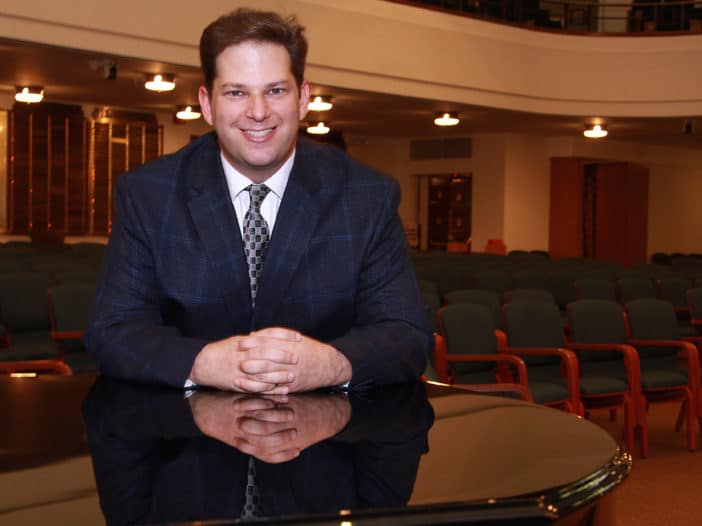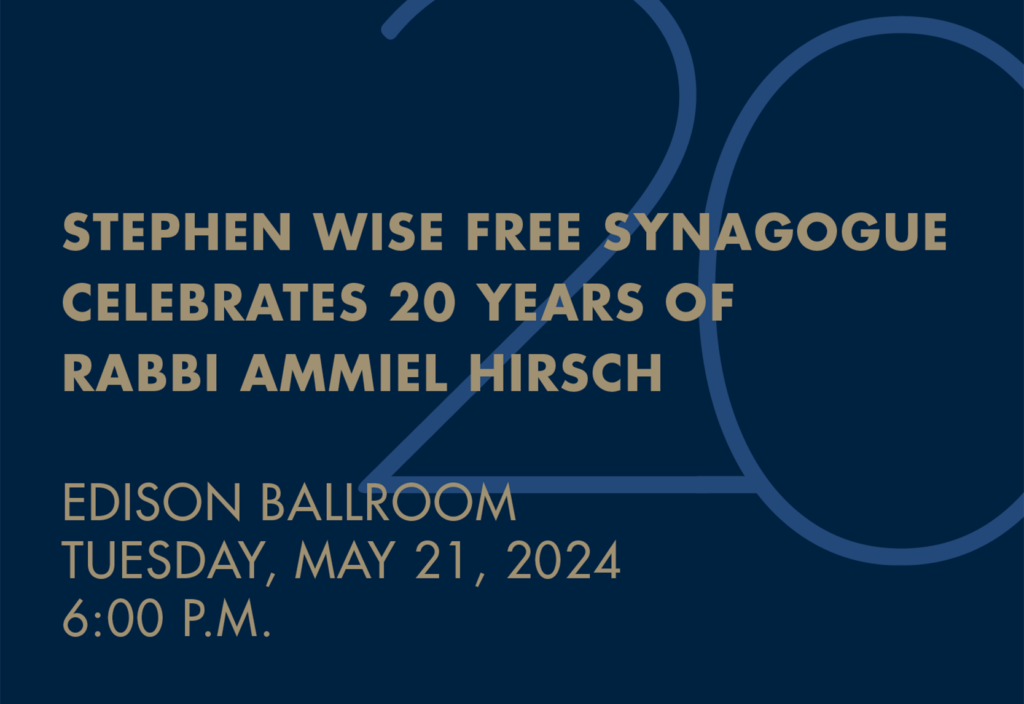
Cantor Daniel Signer is as comfortable singing 18th-century classical liturgical repertoire or leading the congregation in traditional Hasidic or Sephardic melodies as he is performing Jewish pop a cappella with Six13 or singing roles with the Yiddish theater. The third cantor in Stephen Wise Free Synagogue’s history, he joined our congregation in 2006.
Together with Rabbi Ammiel Hirsch, he has implemented a revolutionary model of worship for our congregation. We sat down with him to learn more about our synagogue’s worship services and musical history.
Q. What was Stephen Wise Free Synagogue’s musical worship like before you arrived?
A. Our congregation’s founding music director, A.W. Binder, arranged music with organ and the choir, which was a sign of being a modern congregation during his tenure from the 1920s to 1960s. He didn’t believe cantors had the musical sophistication to lead, so his model involved a hired choir of professional opera singers. In the early 1980s, Rabbi Balfour Brickner decided to hire the synagogue’s first cantor, who implemented a more lay-involved choral model that set the tone for our services until I was brought on board by Rabbi Ammiel Hirsch.
Q. How did you reimagine our music?
A. When I arrived 15 years ago, our community, under Rabbi Hirsch’s leadership, decided to completely remake our synagogue, beginning with reinventing our worship style. We introduced traditional nusach and the full Hebrew liturgy for Kabbalat Shabbat: nine verses of “Lecha Dodi,” all the psalms, and a powerful sermon, followed by a quick Maariv and the closing. I was empowered to “remove” the organ — of course, it’s still physically there and I still play it from time to time — and create a brand new, modern, band-led service. The most important thing was for us to sing all of the liturgy in Hebrew. It’s not the easiest language! But over time, by repeating it enough, our people learned and have grown because of their exposure to this worship.
Q. What inspires your musical selections?
A. I’m inspired by the history of our synagogue, by the words our tradition passes from generation to generation. Musical settings and styles of music tend to shift with time, but the words and stories are eternal. Stephen Wise Free Synagogue, by its nature, is a revolutionary and progressive congregation because Rabbi Stephen S. Wise was a revolutionary and a visionary. The work I’ve done as a cantor and a songwriter is inspired by our past, but also very clearly influenced by the sounds of contemporary music that speak to the people of our generation — and, hopefully, to many future generations of worshippers.
Q. Where do you see synagogue music going next?
A. Past is prologue. I see Jewish music as always having existed in parallel with popular local trends, while being tied to its source. In the last 200 years of European history, we developed a music that was intrinsically tied to the operatic culture most popular among those who also supported synagogues. Prior to that period, the music known as the Bass Chazzan Zinger probably more closely paralleled the very florid music of the Minnesang and Castrati. Today, we’re influenced by the popular music around us: 60s folk rock, Broadway, pop, gospel, and more. I believe the future will continue to be defined by emerging worship trends as well as growing diversity — with more and more cantors who don’t fit the typical masculine European masculine. The cantorate and the rabbinate are evolving, and it’s exciting to see!
Photo by Chris Herder.


